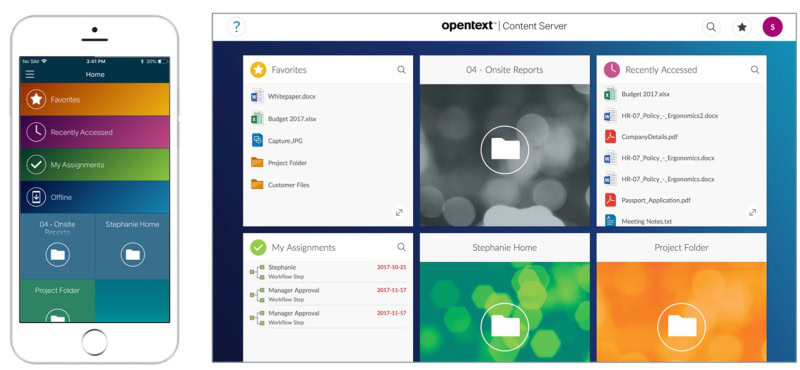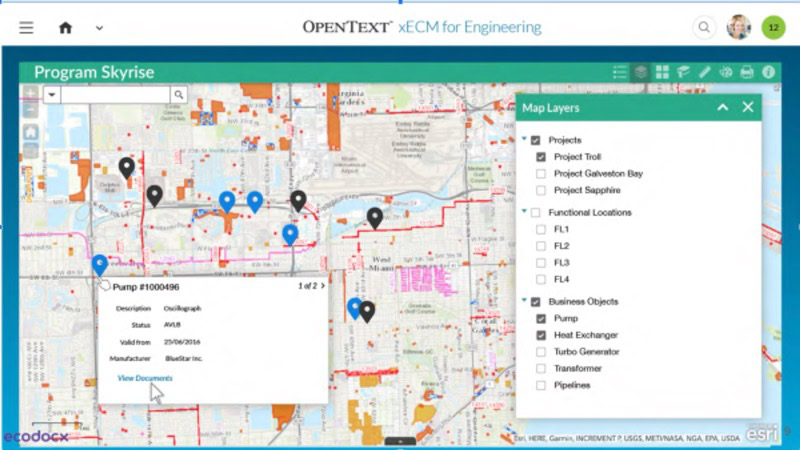Real-time information enables field staff to make the safest, quickest, and most well-informed decisions for themselves, their utility, and the customers.
Electric, natural gas, wastewater, and water utilities are often involved in a variety of infrastructure projects. These can range from routine and smaller projects to significant and large-scale undertakings. Examples of such projects include vegetation management, replacing old gas lines, overhauling old water lines, upgrading water treatment plants, implementing smart meters, energy storage systems, and integrating renewable energy sources such as solar farms or wind turbines. Water utility projects may involve building new wastewater treatment plants or expanding existing facilities to meet growing demand.
Each of these projects generates a significant amount of documentation. This includes engineering plans, technical datasheets, equipment operating manuals, environmental impact reports, compliance documentation, and safety protocols. Managing and organizing this information is critical to the successful execution of these projects.
The Challenge and Risks of Managing Utility Documentation
Managing the extensive documentation generated during utility projects is a complex and demanding task. Traditional methods, such as using paper records or disorganized digital filing systems, often lead to inefficiencies, errors, and delays. Misfiled or outdated documents can cause teams to receive incorrect or incomplete information, which can slow the project schedule or result in costly rework.
In addition, these problems can have more serious consequences. For example, missing or inaccurate safety policies can expose workers to unnecessary risks, potentially leading to employee injuries during installation, maintenance, or repair of equipment and infrastructure.
Here are some examples:
- Electricity: If an electrician does not have the most up-to-date substation wiring diagrams, they may not be aware of recent changes to the wiring or layout. This can lead to accidental contact with live wires, which can result in severe burns or electric shock.
- Water: When repairing a water line, if workers don’t have accurate maps showing the location of all valves and connections, they could accidentally cut a pressurized line. This could lead to flooding and drowning, or someone being hit by debris.
- Gas: When servicing a gas line, if a worker isn’t aware of current safety protocols or the exact location of high-pressure lines, they could accidentally damage a line. This could lead to gas leaks, explosions, and severe burns or death.
Inconsistent documentation can also lead to noncompliance with regulatory requirements, resulting in fines or legal liability. In addition, the inability to quickly access the correct documents can cause operational delays, increase downtime during critical repairs or outages, and impact service to customers.
The Solution: A Unified Document Management Platform
To overcome these challenges, utilities need a centralized platform to manage all asset, infrastructure, and equipment-related documents.
OpenText offers a comprehensive suite of document management solutions that can help utilities achieve these goals. Our solutions provide a robust platform to store, manage and share important documents, streamline operations and improve decision-making.
Key features include:
- Single source of truth: All relevant documents are stored in one place, ensuring consistency and accuracy.
- Mobile access: Field workers can access the correct version of documents on their mobile devices, increasing productivity and reducing errors.

- Advanced search: Powerful search, version control, and revision history capabilities enable easy retrieval and management of documents.
- Role-based viewing, editing, and approval: OpenText solutions enable role-based document viewing, editing and approval by granting users access based on their specific roles within an organization, ensuring that only authorized personnel can view or modify confidential documents. This system streamlines document workflows by automating approval processes, ensuring compliance, and improving collaboration between departments.
- Collaboration: Engineers, project participants, field workers, and various business teams can collaborate on technical drawings (view, print, markup, comment, annotate) to increase efficiency. On top of that, users can compare differences between versions of the same file and view cross-references between files tracked. Multiple design documents can be displayed as layers so engineers can visualize the information quickly and efficiently. Over 250 supported file types, including 2D CAD and 3D BIM. Supported CAD applications are Autodesk® AutoCAD®, Autodesk® Revit®, Bentley® MicroStation® and Dassault Systèmes® SOLIDWORKS®.

- GIS Esri integration: Documents can be organized geospatially, providing a visual representation of their location and relationships to other assets. Field workers can access information on their ESRI mobile devices and view maps and documents related to specific physical assets, such as equipment or plant components. This integration also supports visual searches based on the business characteristics displayed on the map, including project details, collaborating companies, or SAP Plant Maintenance technical objects such as assets, functional locations, or equipment types.

Summary
By implementing a modern document management system, utilities can increase efficiency, reduce costs, and improve overall performance. OpenText helps utilities achieve their goals through innovative solutions that address the industry’s unique challenges.
Want to learn more? Contact our experts today to discuss how OpenText can help your utility optimize operations and improve efficiency.